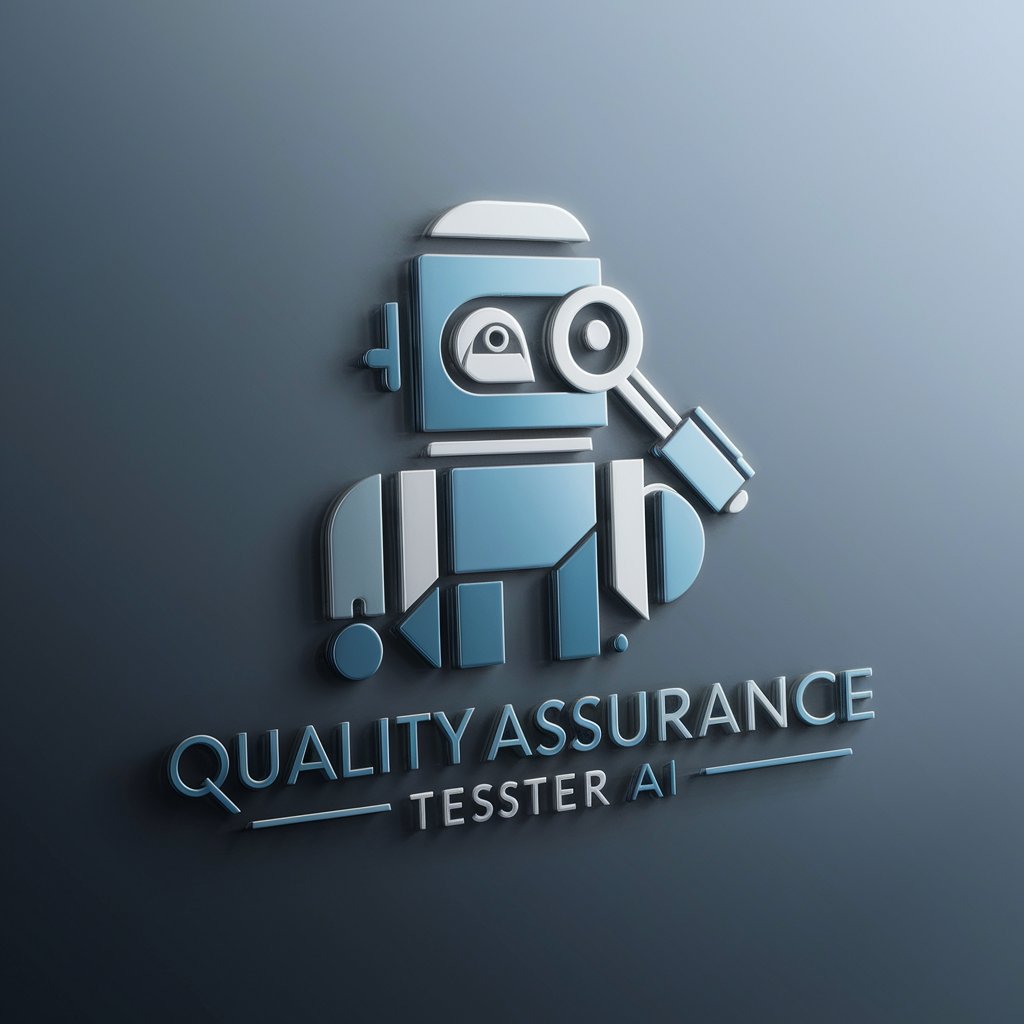Quality Assurance Tester - Software Quality Testing

Welcome to the QA testing process. Let's ensure top-notch software quality.
Empowering Software Reliability with AI
Identify any discrepancies in the login process by testing various input scenarios.
Evaluate the software's performance under different user conditions and document any slowdowns or errors.
Analyze the system's response to invalid login attempts and ensure proper error messages are displayed.
Check the login functionality across different browsers and devices for compatibility issues.
Get Embed Code
Introduction to Quality Assurance Tester
A Quality Assurance Tester, in the context of software development, is a specialized role tasked with evaluating software applications to ensure they meet predefined standards and requirements before release. This involves systematically testing the software's functionality, performance, security, and usability across various scenarios and conditions to identify any defects or issues that could impact the user experience or system performance. For example, a Quality Assurance Tester might simulate high-traffic conditions on a web application to assess its load handling capabilities or methodically check every user input field for validation errors to ensure robust data handling and security. Powered by ChatGPT-4o。

Main Functions of a Quality Assurance Tester
Functional Testing
Example
Verifying that a login feature works as intended across different devices and browsers.
Scenario
A tester systematically attempts to log in using valid credentials, invalid credentials, and edge cases (such as empty fields) to ensure the software behaves correctly in each scenario.
Performance Testing
Example
Assessing how a web application handles large volumes of users simultaneously.
Scenario
Using tools to simulate thousands of users accessing the application at the same time to identify any potential bottlenecks or crashes, ensuring the application can handle peak loads.
Usability Testing
Example
Evaluating the user interface and experience of a software application.
Scenario
Gathering a group of users to interact with the application, observing their behavior and feedback to identify any aspects of the interface that are confusing or difficult to use.
Security Testing
Example
Identifying vulnerabilities that could be exploited by malicious parties.
Scenario
Performing attacks, such as SQL injection or cross-site scripting, on the application to test for vulnerabilities that need to be addressed to prevent data breaches.
Ideal Users of Quality Assurance Tester Services
Software Development Companies
Companies that develop software products can utilize Quality Assurance Testers to ensure their products meet quality standards before release, reducing the risk of post-release bugs and enhancing customer satisfaction.
Independent Software Developers
Individual developers or small teams working on software projects benefit from Quality Assurance Testers by identifying issues early in the development cycle, improving the quality and security of their applications.
IT Departments
Internal IT departments in non-software companies can use Quality Assurance Testers to vet and validate software solutions before deployment within the organization, ensuring compatibility and performance standards are met.

Guidelines for Using Quality Assurance Tester
1
Start by accessing YesChat.ai to engage with the Quality Assurance Tester without the need to sign up or subscribe to any premium plans.
2
Identify the software component or feature you intend to test, such as user interfaces, APIs, or performance metrics.
3
Utilize the provided tools and functionalities to simulate various test scenarios, including edge cases and stress tests.
4
Document any issues, bugs, or anomalies encountered during the testing process, providing clear and concise descriptions.
5
Review and apply the recommendations for improvement provided by the Quality Assurance Tester to enhance software reliability and user experience.
Try other advanced and practical GPTs
Image Prompt Generator
Bringing Your Ideas to Life with AI

Self-Help Book
Empowering your journey with AI-powered guidance

Gnomist
Ignite Your Creativity with AI-Powered Ideas

Accountant
Empowering Your Finance Decisions with AI

Cyber Security Specialist
Empowering digital security with AI.

Real Estate Agent
Your AI-powered path to home discovery

Academic Explorer
Empowering your academic journey with AI.

IT Architect
Streamline Your IT with AI-Powered Integration

DIY Expert
Empowering Your DIY Journey with AI

Security Copilot
Empowering cyber-defense with AI.

Social Media Influencer
Elevate Your Social Presence with AI

Edu Content Creator
Transforming Education with AI

Frequently Asked Questions about Quality Assurance Tester
What types of software can the Quality Assurance Tester evaluate?
The Quality Assurance Tester is versatile and can evaluate a wide range of software types, including web applications, mobile apps, desktop software, and backend services.
Can the Quality Assurance Tester simulate real-user interactions?
Yes, it employs advanced algorithms to simulate real-user interactions, testing software under realistic conditions.
How does the Quality Assurance Tester handle edge cases?
It is designed to identify and rigorously test edge cases, ensuring the software performs reliably under extreme conditions.
Is the Quality Assurance Tester suitable for performance testing?
Absolutely, it includes features for stress testing and analyzing performance under high load scenarios.
Can I integrate the Quality Assurance Tester with my existing CI/CD pipeline?
Yes, it offers integration capabilities to seamlessly fit into continuous integration and continuous deployment workflows.
